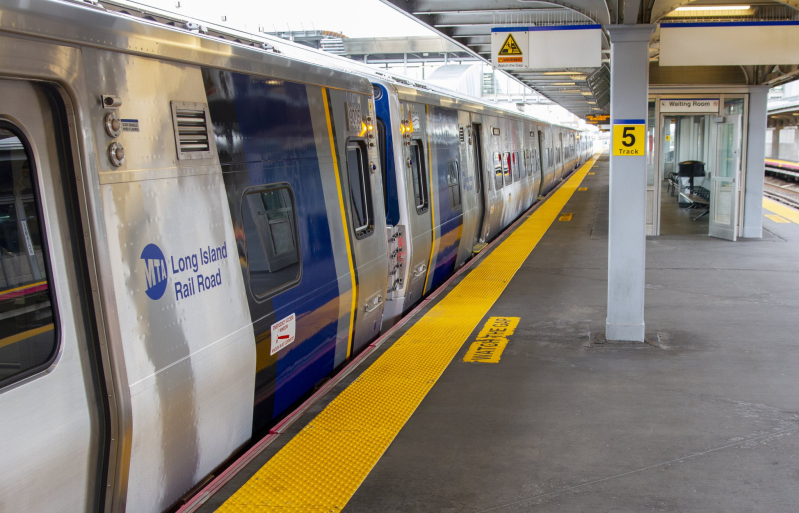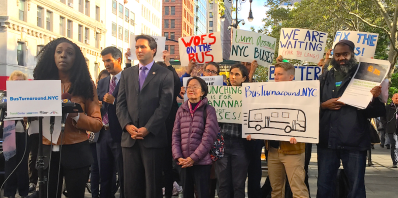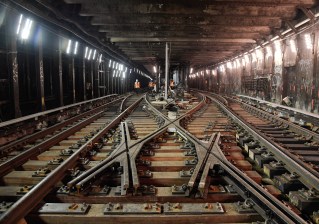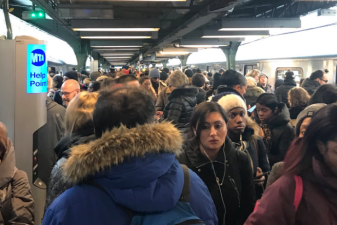Report: Racial and Economic Inequities in Transit Affect Accessibility to Jobs, Healthcare

Black and Brown New Yorkers are more likely to rely on public transit to get to work in the New York City area, but on average have far less access to jobs as their car-driving neighbors, who are often wealthier, whiter, and live in the ‘burbs, according to a new study that highlights the city and state’s transit inequities and its effects on jobs attainability.
The new TransitCenter data reveals that the average New Yorker has access to five times as many jobs by car than by bus, subway, or train. Advocates are already using the data to demand elected officials prioritize funding transit in order to close the gaps that contribute to the racial and economic disparities for poorer New Yorkers — many of whom were the frontline and essential workers that kept the city running throughout the COVID-19 crisis.
“New York leaders must build back fairer by investing in public transit,” said Riders Alliance Policy and Communications Director Danny Pearlstein. “Whether it’s devoting more public space to bus lanes, redesigning networks to put low-income communities first, or investing in subway service, reliability and accessibility, there’s a part to play at every level of government.”
And in a city like New York, where more than 50 percent of the households do not have access to a car — and where the median income of households with vehicles is more than double than those with none — access to fast and efficient public transportation is a crucial equity issue.
According to the TransitCenter analysis of Census data, 44 percent of Black New Yorkers relied on transit to get to work in 2019, compared to 39 percent of Asian residents, 36 percent of Latino residents, and just 24 percent of White residents.
Specifically, TransitCenter calculated New Yorkers’ access to jobs based on where they live — and found that White residents have access to 86 percent more jobs than Black residents within a 45-minute commute via public transit; the average Black resident has access to 512,660 jobs in 45 minutes via transit, the average Latino resident can access 653,943 jobs, and the average Asian resident can access 825,470 jobs, compared to the 956,756 accessible jobs for the average White resident.

In order to level the playing field, elected officials could make the transit system more equitable by lowering fares, running more frequent train and bus service, and prioritizing bus rapid transit. And the problem is regional.
That’s why transit advocates like Riders Alliance and Tri-State Transportation Campaign are calling on the MTA to not only make the Atlantic Ticket permanent — which started a pilot program in 2018 and allows Long Island Rail Road riders in Brooklyn and southeast Queens to buy one-way tickets to Atlantic Terminal for $5, or buy a $60 weekly pass that comes with a seven-day MetroCard attached as well — but also expand it to include transfers to subways and buses.
“A robust transit system is good for the region and our economy, but it’s critical that fast and efficient service is financially within riders’ reach – similar to the $5 Atlantic Ticket pilot program,” said Lisa Daglian, executive director of the Permanent Citizens Advisory Committee to the MTA. “Expanding these discount commuter rail fares, with transfers to subways and buses, will not only make transit more equitable and improve access to jobs but also help reduce congestion and improve air quality by moving people out of cars.”
And the high cost of commuter rail trips on the LIRR, Metro North and NJ Transit — along with their schedules that cater more to wealthier residents living in the suburbs with 9-to-5 jobs — is prohibitive for lower-income residents. For those that cannot afford to pay more than $5 for a one-way trip into the city, their access to jobs shrinks by 42 percent, compared to those that can, the center found.
And it’s not just jobs for which poorer residents without access to a car get slighted. TransitCenter found that on a random weekend morning, it takes nearly three times as long to reach the closest hospital using public transit, compared to driving there — a pattern that holds true for access to universities and grocery stores, according to the data.

The TransitCenter study revealed that the New York metro area is certainly not alone in disadvantaging transit users when it comes to jobs and access to basic services. As StreetsblogUSA reported earlier this week, it’s a problem in most big cities — where transit was simply built for the needs of the late 19th-century commuter, not the 21st-century version.
“In many of our cities, we have this two-tiered public transit system where one mode is more expensive — for example, an express bus system, or a commuter train —— whose main purpose is to transport more affluent, largely White commuters to their jobs in the city centers, and then whisk them back to the suburbs at the end of the day,” said Mary Buchanan, who co-authored the report. “Then there’s the local system — usually a bus — which is often less expensive and makes more stops in the city center, but it’s also a lot more costly in terms of time, reliability, and ease of use. That dynamic, where transit service for people with more means is more effective and transit for service for everyone else is less effective, is pretty pervasive — and there’s been a lot of research that over time, it discourages [the latter group] from riding transit at all.”


